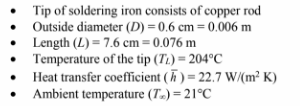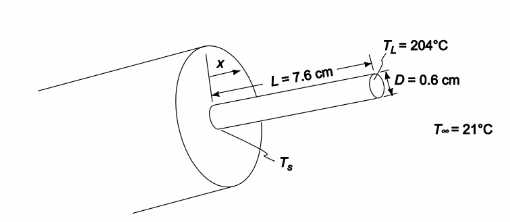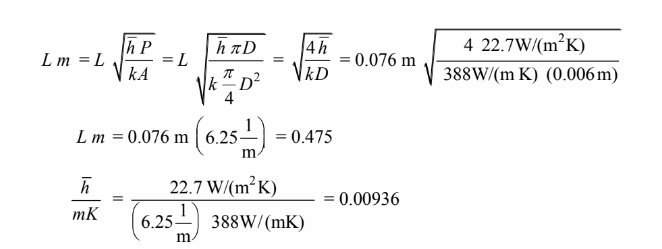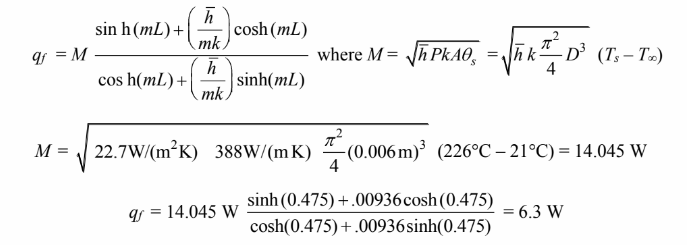The tip of a soldering iron consists of a 0.6-cm diameter copper rod, 7.6 cm long. If the tip must be 204°C, what are the required minimum temperature of the base and the heat flow, in watts, into the base? Assume that h= 22.7 W/(m2 K) and Tair = 21°C.
GIVEN

FIND
(a) Minimum temperature of the base (Ts)
(b) Heat flow into the base (q) in W
ASSUMPTIONS
The tip is in steady state
The thermal conductivity of copper is uniform and constant, i.e., not a function of temperature
The copper tip can be treated as a fin
SKETCH

(a) the temperature distribution for a fin with a uniform cross section and convection from the
tip is


Evaluating the temperature at x = L

Solving for the base temperature

(b) To maintain steady state conditions, the rate of heat transfer into the base must be equal to the rate of heat loss from the rod. From Table 2.1, the rate of heat loss is

You might also like to view...
You slam on the brakes of your car in a panic, and skid a certain distance on a straight, level road. If you had been traveling twice as fast, what distance would the car have skidded, under the same conditions?
A) It would have skidded 4 times farther. B) It would have skidded twice as far. C) It would have skidded 1.4 times farther. D) It would have skidded one half as far. E) It is impossible to tell from the information given.
We usually think of friction "opposing motion". Explain how friction assists the motion of a car
What will be an ideal response?
Radiant energy reaching the Earth from the sun is not sufficient to keep the Earth's surface temperature comfortable for life. Of the following, the most likely source of the additional thermal energy is from
a. fusion of hydrogen nuclei in the Earth's core. b. fusion of high Z nuclei in the Earth's core. c. fission of radioactive nuclei inside the Earth. d. fission of radioactive nuclei in cosmic rays. e. deflection of radioactive nuclei in cosmic rays.
Diverging lenses have negative focal lengths
Indicate whether the statement is true or false